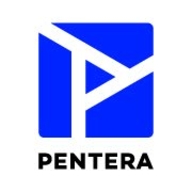

Pentera and Tines are competitive products in the cybersecurity automation domain. Tines has the upper hand due to its advanced features, while Pentera is favored for pricing and support.
Features: Pentera offers automated penetration testing, vulnerability management, and a cost-effective setup. Tines provides robust automation capabilities, integration with various third-party systems, and flexibility in automation.
Room for Improvement: Pentera could enhance its feature set to offer greater flexibility, improve integration with third-party systems, and increase the return on investment. Tines may focus on simplifying deployment, reducing initial costs, and expanding customer support options.
Ease of Deployment and Customer Service: Pentera is known for straightforward deployment with comprehensive customer support, making it easy to set up. Tines, while more complex to deploy, benefits from strong community support and customer service, with resources to manage its complexity.
Pricing and ROI: Pentera is more budget-friendly upfront, offering immediate cost savings. Tines requires a higher initial investment but delivers strong long-term benefits with a solid return on investment through its comprehensive features.


Pentera is the category leader for Automated Security Validation, allowing every organization to evaluate its security readiness, to know its real security risk at any given moment. Test all cybersecurity layers across the attack surface – inside and out – by safely emulating attacks & prioritize patching with a risk-based remediation roadmap.
Thousands of security professionals and service providers around the world use Pentera to guide remediation and close security gaps before they are exploited. For more info visit: pentera.io
Tines automates manual security tasks, incident response workflows, and tool orchestration, enhancing efficiency by reducing repetitive processes and improving response times.
Users leverage Tines to automate complex security and incident response operations, integrating seamlessly with other platforms to streamline tasks. Its no-code automation capabilities and strong security features are particularly valued. While it enhances operational efficiency, users suggest improvements in customer support, documentation, and additional integration capabilities to overcome learning curve challenges. Some mention occasional latency issues and seek more customization, training resources, and clearer pricing structures. Enhanced scalability and detailed error logs are desired for smoother troubleshooting.
What are Tines' most important features?
What benefits and ROI should users look for?
In specific industries, Tines is implemented to automate security operations in sectors like finance, healthcare, and technology, where rapid incident response and integration with other platforms are crucial. Automating complex workflows without code is particularly beneficial in these fast-paced environments.
We monitor all Breach and Attack Simulation (BAS) reviews to prevent fraudulent reviews and keep review quality high. We do not post reviews by company employees or direct competitors. We validate each review for authenticity via cross-reference with LinkedIn, and personal follow-up with the reviewer when necessary.